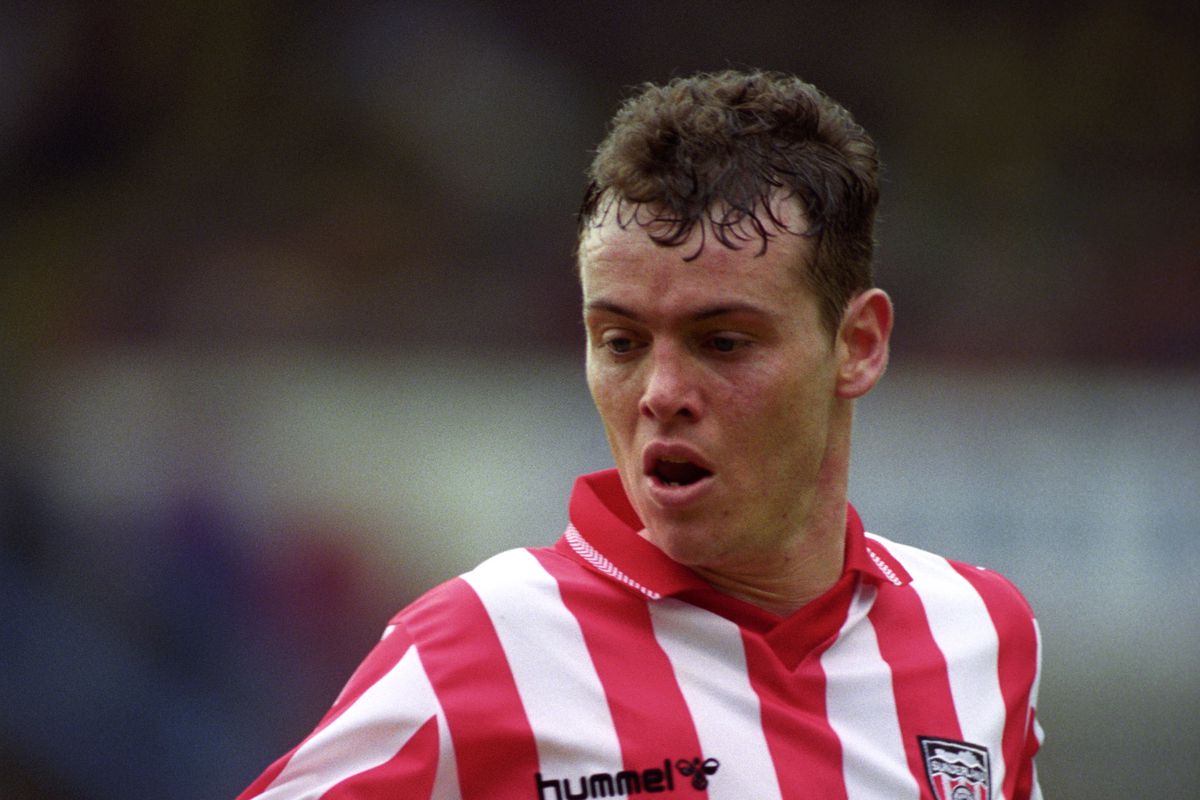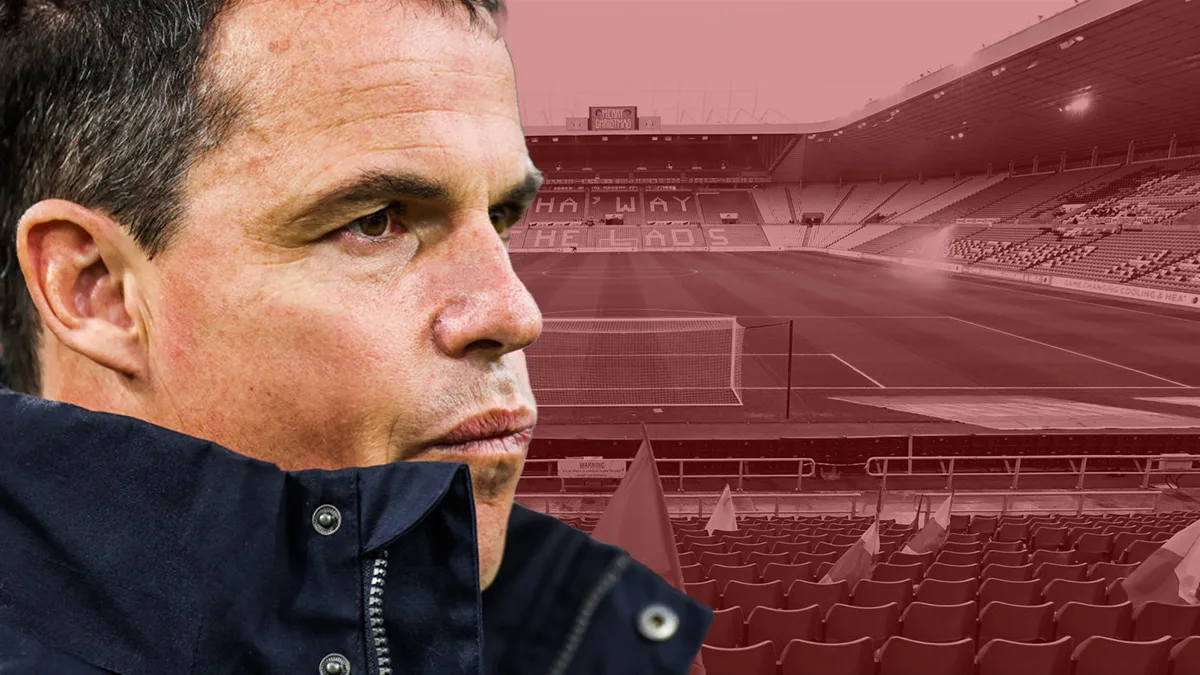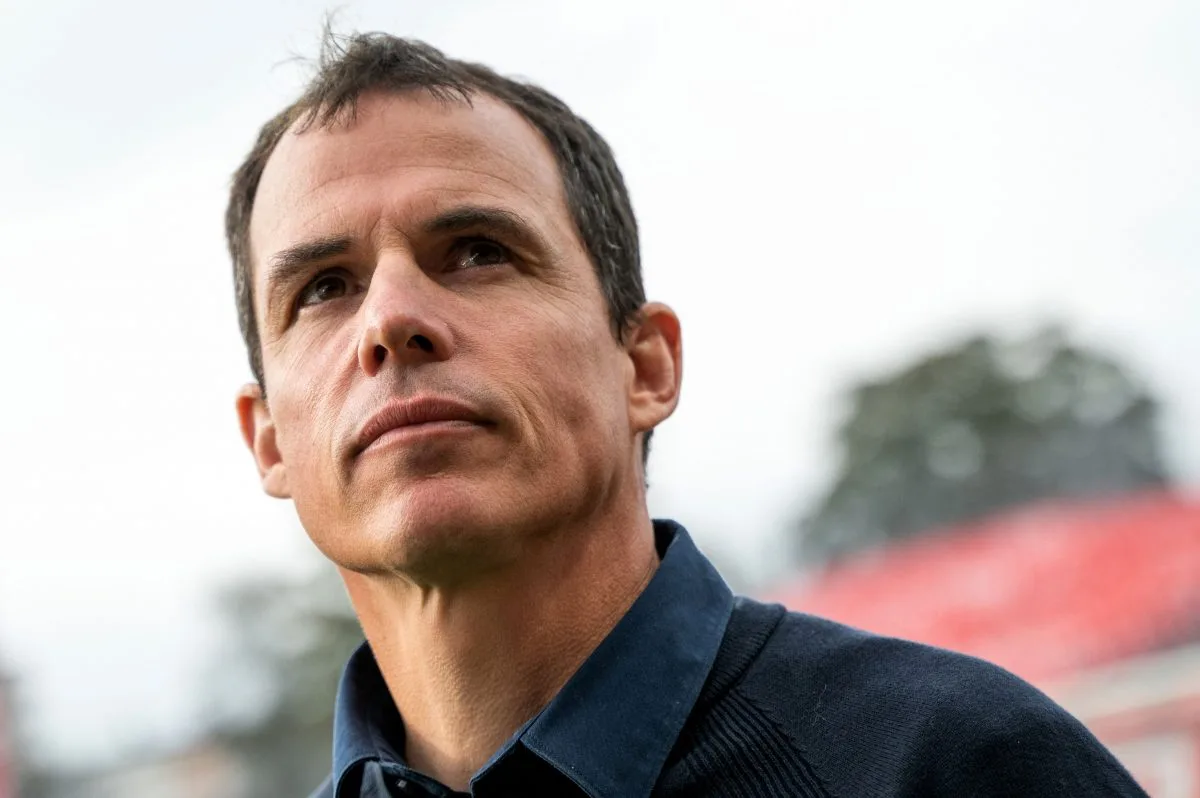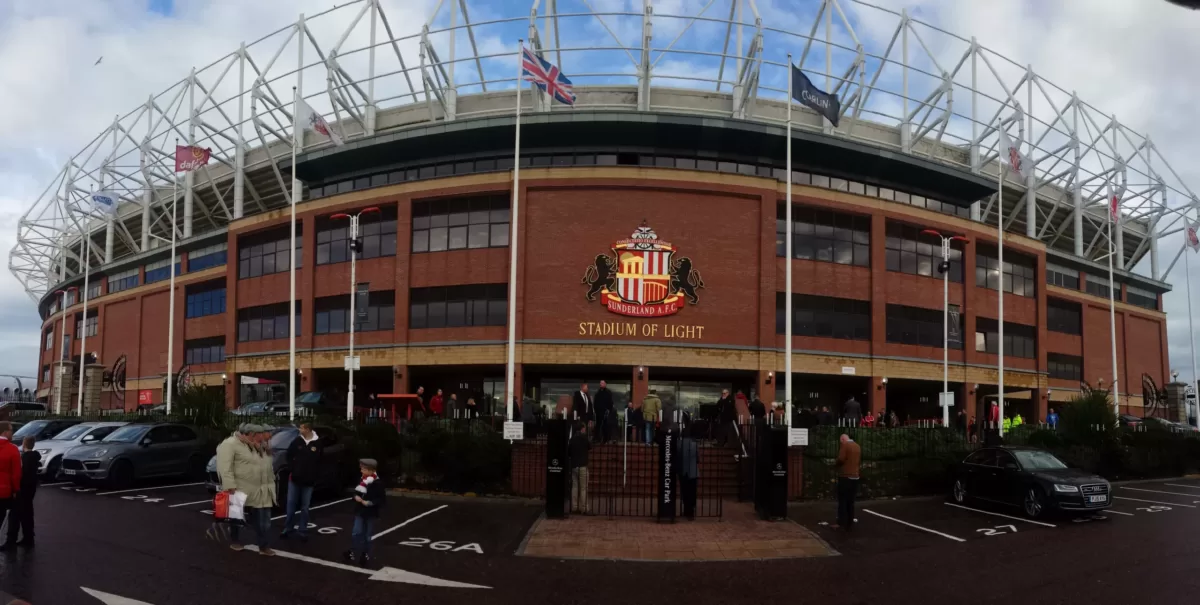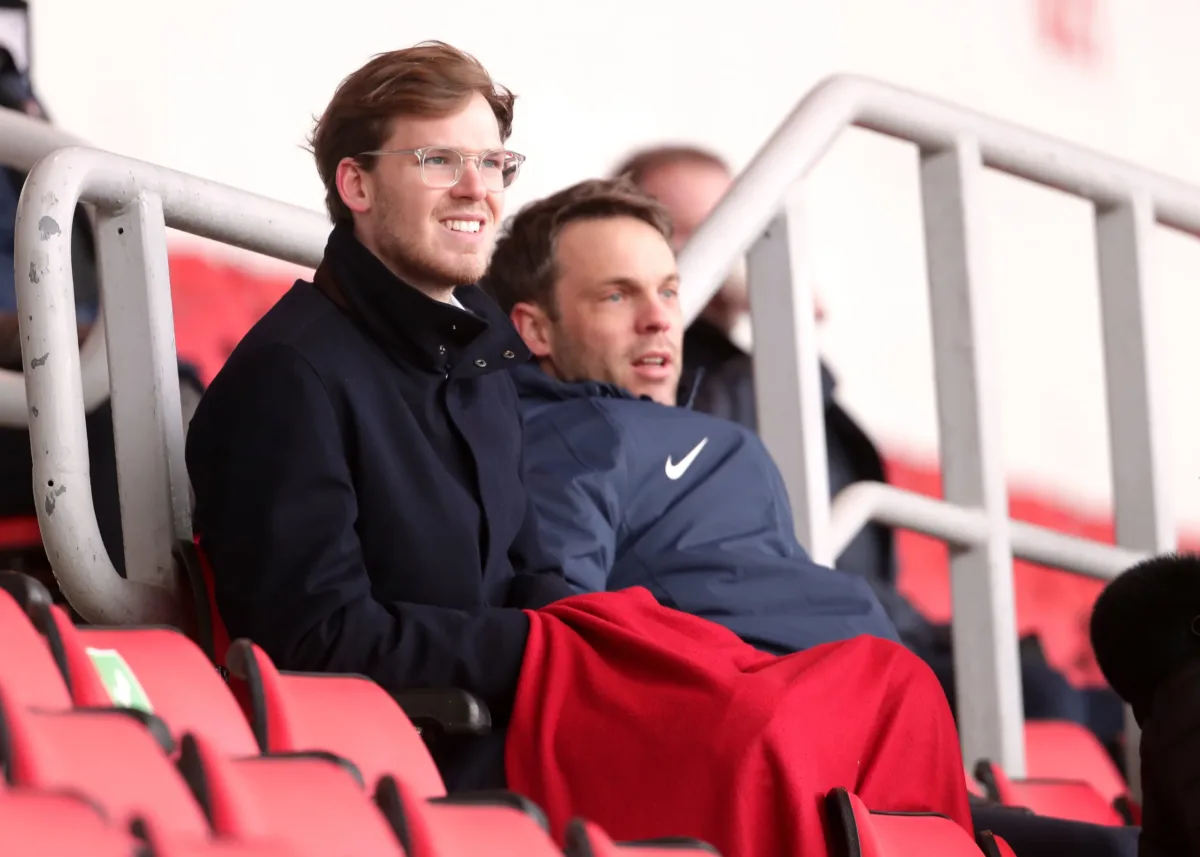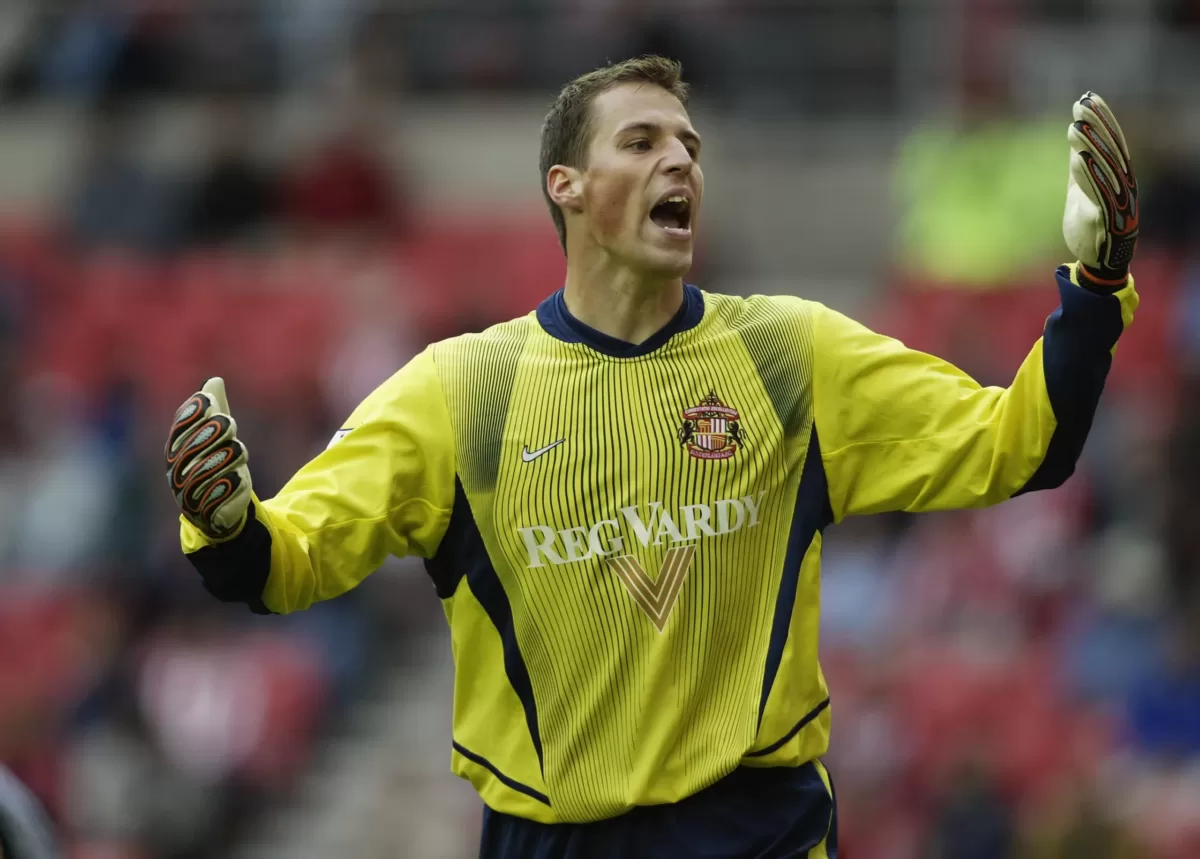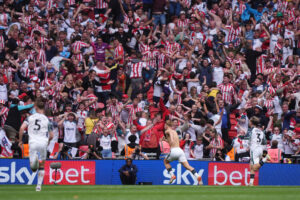Tuesday night’s result was a tricky one to take for Sunderland fans, but just as Craig Pawson said after the penalty that never was, we must play on. Our spree of the Lancashire/Greater Manchester sides is finally coming to a close this weekend with the visit of Burnley to the Stadium of Light.
In true Burnley fashion, although we’ve shared at least 30 players between us by my count, literally only one of those came from anywhere beyond the UK or Ireland – a giant Slovakian by the name of Stan Varga, for those interested. The two clubs have shared a lot of Typically Burnley players, i.e., hard working and tough tackling/occasionally crazed; but we’ve also shared a couple of big names who were arguably past their best by the time they played for each club. So naturally, we’re looking at both today.
Gordon Armstrong
Fitting right in under the “hard working” category, it’s lifelong Sunderland fan and Roker Park youth product, Gordon Armstrong. The midfielder’s tenure at Sunderland began way back in 1985, under the rule of Sunderland legend Len Ashurst, and would eventually see him play under eight managers in total before his 11-year stay was up in 1996. Granted, that same run of managers would only go back three years from 2022, but it was a bit more impressive back then.
Armstrong’s Sunderland career had a stuttering start, first used as an emergency centre back by Ashurst, then being one of many (thousand) to struggle under Lawrie McMenemy, but thankfully for Gordon and everyone in red and white, Denis Smith took over in the summer of 1987 (although McMenemy’s damage was done and Sunderland had been relegated to Division Three), and Armstrong’s fortunes were turned around.
In the middle of a team that contained the talents of Marco Gabbiadini, Eric Gates, Gary Bennett and co, Armstrong helped fire the Lads back up to Division Two at the first time of asking, as well as being a key member of the squad you would win promotion to the top flight in 1991 (thanks as well to Swindon’s dodgy financial dealings), beating Newcastle in the play-off semis en-route.
Of course, the moment that everyone remembers from Armstrong, regardless of whether you were old enough to actually remember it or not, came in the 1992 FA Cup quarter final against Chelsea. After a 1-1 draw at Stamford Bridge, the replay was a cagey affair, as an early Peter Davenport goal caused a Chelsea onslaught and after several clearances on the line and a few wonder saves from Tony Norman, the Blues finally equalised via Dennis Wise with only five minutes on the clock. But in one last big push, we won a corner with only two minutes to go, swung in by Brian Atkinson and straight onto the head of Armstrong, who depending on your recollection was stood somewhere between the penalty spot and Penshaw Monument. Victory for Sunderland and we eventually got to the cup final, only to have our dreams scuppered by Liverpool.
After the Smith and Malcolm Crosby eras had come to a close, tumultuous seasons under Terry Butcher and Mick Buxton followed before Peter Reid arrived in March 1995, but with that spelled the end of Armstrong’s time on Wearside. Within a year of Reid’s arrival, Armstrong had moved on first with brief loans at Bristol City and Northampton and an 18 month stay at Bury. The last five years of Armstrong’s career (barring a small stay at Accrington) were spent at Turf Moor, mainly under Sunderland fan and Top Drawer Old School manager Stan Ternent.
Burnley during Armstrong’s stint looks nothing short of chaotic entertainment, as those five years saw the midfielder line up alongside such names as Lee Howey, Kevin Ball and Paul Gascoigne. The Clarets won promotion back to Division 1 in 2000, and set the foundations for a nine-year stay in the second tier with a series of mid table finishes.
Upon leaving Burnley in 2003, Armstrong spent two years working down the leagues with Accrington, Radcliffe Borough and Stalybridge Celtic before retiring in 2005 at the age of 38. Since retiring, Armstrong’s gone on to be a football agent and has represented a couple of Sunderland academy products over the last few years.
One thing that should always be highlighted with Gordon Armstrong is the sheer number of games he managed, as he hit 105 league appearances for Burnley, but is impressively still seventh on the all time list of Sunderland appearances, with 349 in the league, and 416 in all competitions; to this day, only Micky Gray has come close in the 21st century, and he left Sunderland 17 years ago.
| Joined | Left | League Apps | League Goals | |
| Sunderland | 1983 | 1996 | 349 | 50 |
| Burnley | 1998 | 2003 | 105 | 5 |
Andy Cole
Now, we all know about Andy Cole’s career prior to around 2006. He’d been a wonderkid at Bristol City and an unstoppable goalscorer at Newcastle in the early-mid 90s, then moved on to become one of the most feared strikers in the country as part of Sir Alex Ferguson’s formidable Manchester United team, winning leagues, FA Cups and the Champions League on the way. Once his game time at Man Utd had started to fade, he moved to an ambitious Blackburn side in 2001 and continued his trophy haul, picking up the League Cup that same year.
In 2004 came a season at Fulham, where he still managed 12 in 31 appearances, and another nine in 22 at Manchester City the following season, at the age of 35. Things only really started to slow down for Cole in 2006 when he signed for Portsmouth, predominantly as back up, which saw his appearances cut down to 18, and only three goals – netting another in his five appearances on loan at Birmingham in 2007.
So when he was released in 2007, approaching his 36th birthday, nobody was really expecting the striker to be offered another crack at the Premier League, but that’s exactly what Roy Keane did when he continued his Getting The Band Back Together project at Sunderland.
In fairness, a similar move had worked previously for Keane with the signing of Cole’s strike partner at Man Utd and Blackburn, Dwight Yorke. However, where Yorke was converted into a cultured sitting midfielder, Cole was very much signed to be another forward. Cole’s time at Sunderland was largely pointless, unfortunately for him, as he managed only seven league appearances, his debut coming in our 7-1 humbling at the hands of Everton in November 2007; he came off the bench on the 67th minute, the score at a modest 4-1 at that point. Incredibly, he started the next game which we staggered to a 90th minute winner over the worst team in Premier League history, Derby County.
Cole’s final appearance in a Sunderland shirt was a 2-0 away loss to Tottenham in January 2008, before being loaned out to Burnley. Possibly owing to the drop in the level, or maybe a determination to show he still had something left to give, Cole managed six goals in his 13 games as a Claret, including a 45 minute hattrick in a 4-2 win at QPR. Cole was released at the end of the season (to the shock of absolutely no one) but wasn’t signed by Burnley either, so instead he headed to Nottingham Forest in July 2008, lasting four months, 10 appearances and zero goals before hanging up the boots at the age of 37.
An incredible goalscorer for almost every club he played for, but typically, not for us.
| Joined | Left | League Apps | League Goals | |
| Sunderland | 2007 | 2008 | 7 | 0 |
| Burnley | 2008 | 2008 | 13 | 6 |

